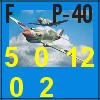

Similarities to the Vietnam War
Th US forces in Afghanistan are fighting in the world's worse possible terrain against a cunning and very adaptable foe: the Taliban and Al-Qaeda. In many ways, the foe is WAY worse than the more predictable North Vietnamese Army, a more convential force,and its North Vietnamese Liberation Front, or Viet Cong, its radical terrorism group.
The similarity to the Vietnam war is not in the geography, but the tactics used by both forces and the problems faced by the American soldier in this lunar like lanscape. Like in Vietnam, the enemy was difficult to find, locate and fix because of the lush tropical landscape, even with sensors. Like the Vietnam war, combat unit formations were small in size, not much more than battalions was more often than not. Many battles in Vietnam were small unit actions comprising of company size or less. Once the US forces engaged the enemy, the inevitable call to artillery, air strikes with napalm or B-52 runs were requested. US forces were instructed to fall back out of the kill zone. The NVA or VC usually monitored the radio or instinctively heard the approach and suddenly stopped the attack and vanished. Sometimes it worked and sometimes it did not. As was said many times during that war, the US won the battles most of the time, yet failed to win the war.
We have the same situation developing in Afghanistan. The same tactics are being used in addition trying to win the "hearts and minds" of the population, and like in Vietnam, most of the locals are lukewarm, at best, about the US presence, and easily persuaded by the money of the Taliban or Al-Qaeda to switch sides. This happened in Vietnam, but usually, the NVA or VC provided food, health care, clothes to win the locals.
In the Korangel Valley, a recent small firefight killed one US soldier. A platoon of around 40 men climbed down from their outpost and were on recon down into the small hamlets or towns around Ali-abad, mingle with the locals and try to "win" their support. The locals are cordial but remain silent when asked about "you know who". Much like the locals in Vietnam when asked about VC. A week earlier the same US platoon had killed over 15 suspected Taliban fighters in an ambush. The local leaders were angry and claimed that the men killed were actually looking for a lost girl despite being armed. The US response was essentially, bullshit. Same things happened in Vietnam. A kid would take the chocolate from a GI, smile, and suddenly five minutes later, the APC would blow up with the GI.
The US troops continued passing one local leader, Zarin, coming from a small town called Laneyal, where the US troops suspected terrorists existed. Not long after exchanging greetings and smiles with Zarin, all hell broke loose as the US platoon was caught in a three-way deadly Taliban crossfire as they attempted to scale up the terraced wheat field. The platoon really was close to chaos, hunkering down in the rocks along the river bed. The firebase, a mile away, started lobbing 120mm shells. A squad left at Ali-abad, peppered the area with machine gun fire. The terrain is ominious. Not a place to be ambushed at!
With the enemy closing in and the US holding their ground, things were getting worse, not better. Like in Vietnam, the call to airstrikes was requested. As the aircraft approached, like in Vietnam, the Taliban vanished like ghosts. The pilot told the troops incoming was a 500 pounder, get the hell out of its blast zone. They did. Other bombs followed, blowing the crap out of anything. The harrowing ambush had receded. Only one US soldier killed, no Taliban bodies were found. All in a day's life in the war . Maybe the enemy had dragged off the body.
Just like in Vietnam forty years ago. History is repeating once again at all levels.






